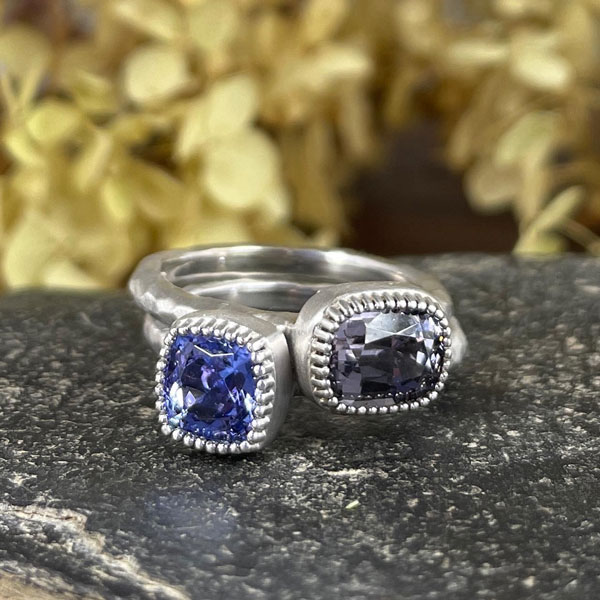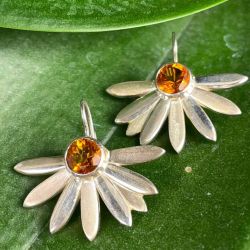The Smoky, Mysterious Beauty of Gray Spinel

Who knew gray could be so colorful? Yes, gray. Boring? Neutral? Depressing as a heavy autumn sky? The uniform of dystopian conformity? None of the above! Those using gray as a symbol of everything dull have obviously never seen the confounding beauty of a gray spinel.
I love their magical and mysterious qualities. The understated, subtle colorations are divine on their own, showing layered complexity with undertones of violet, purple, blue, and green. When I combine them with other gemstones, the gray tones bring out nuances of color. They are an amazing foil when arranged with a group of multi-hued stones.
History
The red spinel has a long and illustrious secret history—secret, because it has historically been mistaken for the much more prized ruby. Two massive rubies found in the British Crown Jewels, the Black Prince’s Ruby (170 carats) and the Timur Ruby (352 carats), are actually red spinels. But the gem came into its own in the 20th century thanks to Cartier’s bold designs featuring large red spinels. Because of its non-traditional color, gray spinel, however, has long been overlooked, and is only now getting some of the recognition it deserves.
Mining
Myanmar has the world’s most abundant supply of gray spinel, but East Africa and Southeast Asia are also major suppliers of the gemstone. In the East African nation of Tanzania, gray spinel is mostly mined by small-scale artisan operations. Sri Lanka, off the southern coast of India, is another major source of gray spinel.
What is responsible for this wide range of colors? As with other gemstones, it is the presence of different elements. When trace amounts of iron replace magnesium atoms in the spinel’s crystal structure, the crystal is tinted gray. While the specifics of spinel color is still something of a mystery, gray spinel is thought to occur when a spinel has characteristics of both dark blue and light blue.
This presence of iron also makes the gemstone weakly magnetic. It is very weakly magnetic, though—it won’t be much use in sticking your kid’s drawing to the refrigerator. Which is fine; it looks much better on your finger or dangling from your ear.
Refractive Gemology
Most gemstones are doubly refractive: when light passes through them, the beam splits in two. But spinels, along with diamonds and garnets, are singly refractive. Single refraction, combined with a high refractive index, is what gives diamonds their distinctive fire. Spinel, on the other hand, has a low refractive index, closer to that of garnet, which contributes to spinel’s deep and mysterious vibe.
The Future is Gray
Red and blue have always been the most popular varieties of spinel. They look just like rubies and sapphires, and before modern chemistry, no one could tell the difference between the two anyway. Gray spinel is actually much rarer than either of those varieties, but they cost a fraction of the price. But as jewelry connoisseurs have begun to crave more unique colors, spinel’s wide range of colors have made them more popular than ever.
I’ve been working with gray spinel for the past three years. Before then, I hadn’t seen many in the market. Other colors of spinel have had their moment, but I’m so glad to see the mystery and magic of the gray variety finally getting some love.













Sincerely
Shannon Mays